
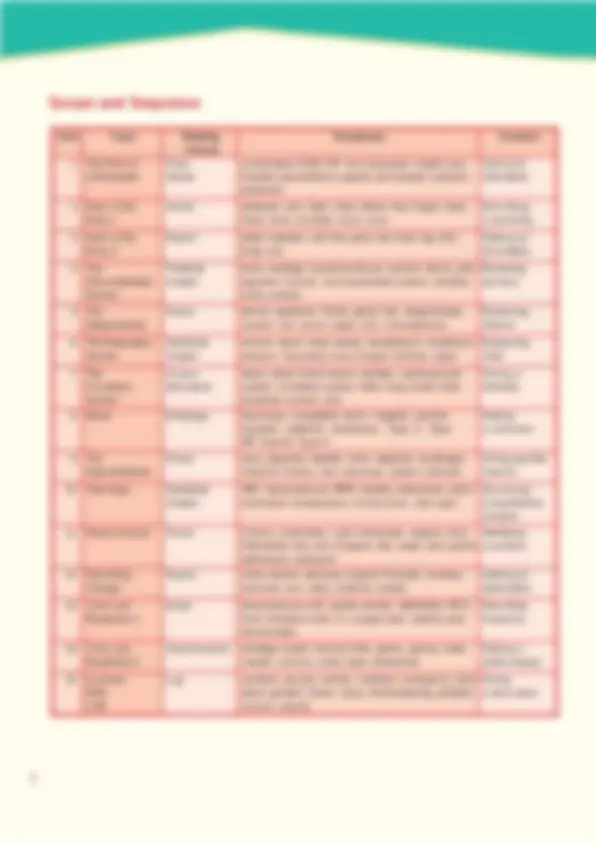
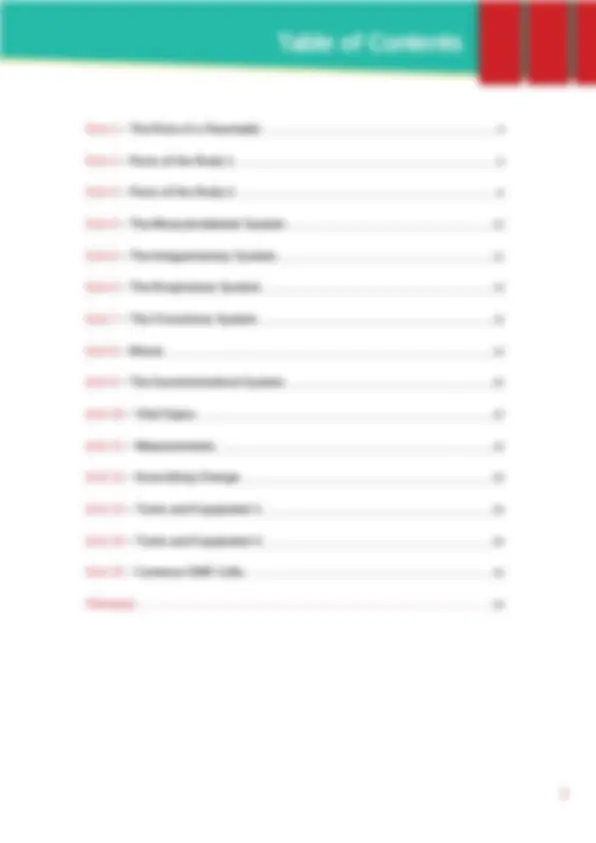
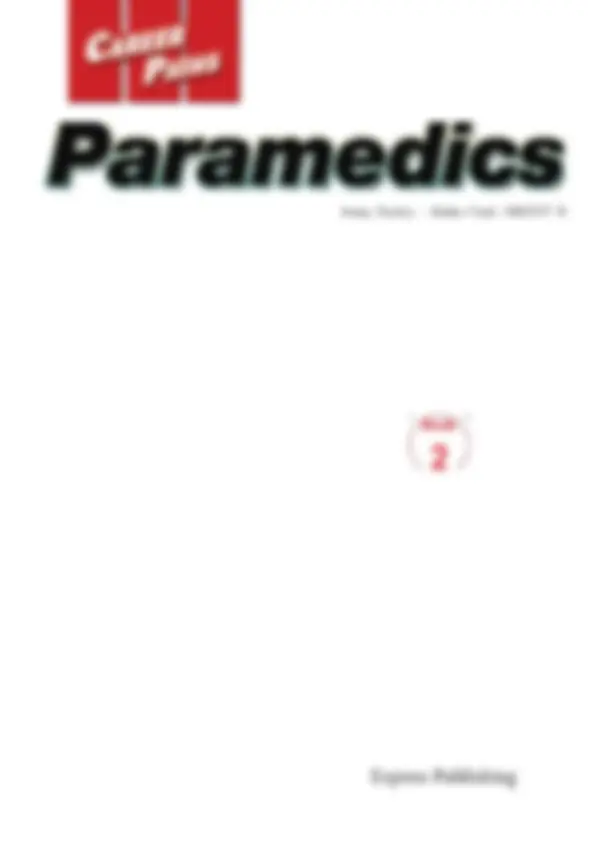
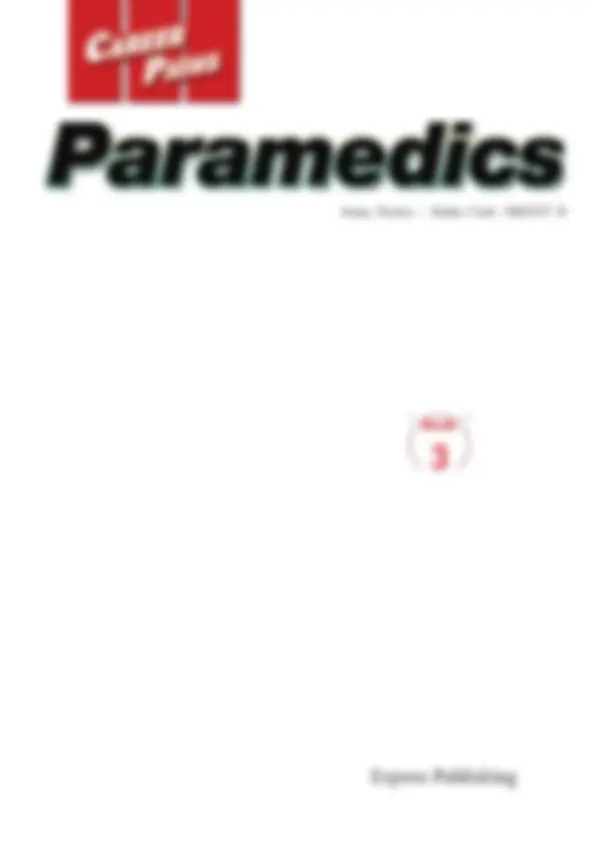
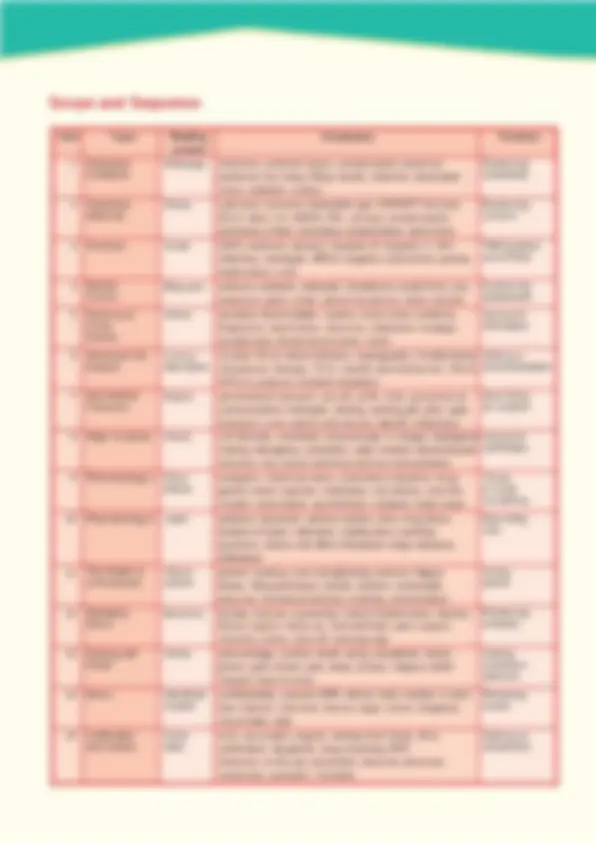
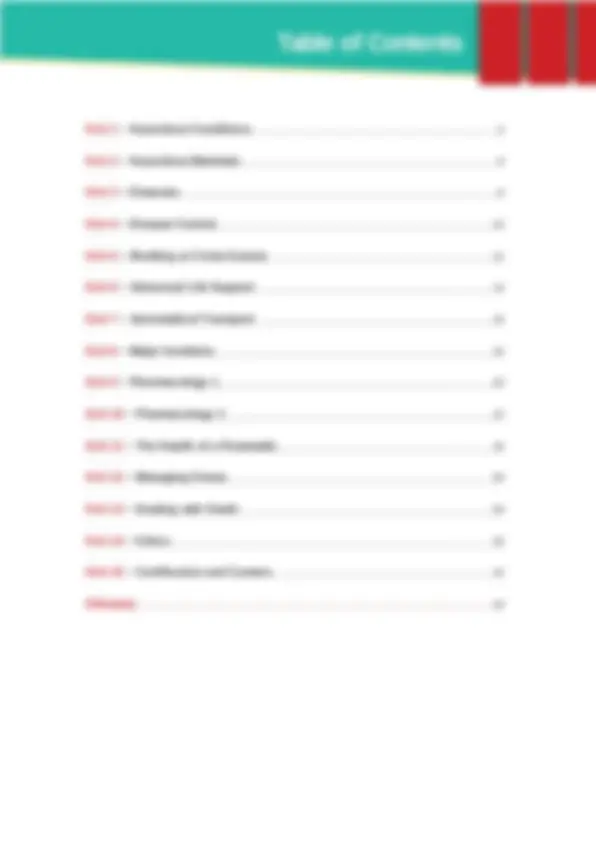
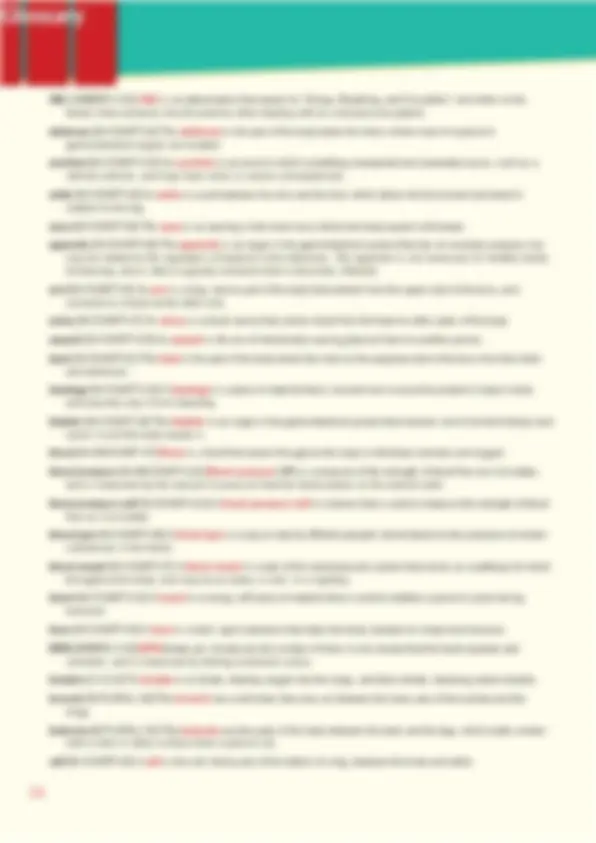
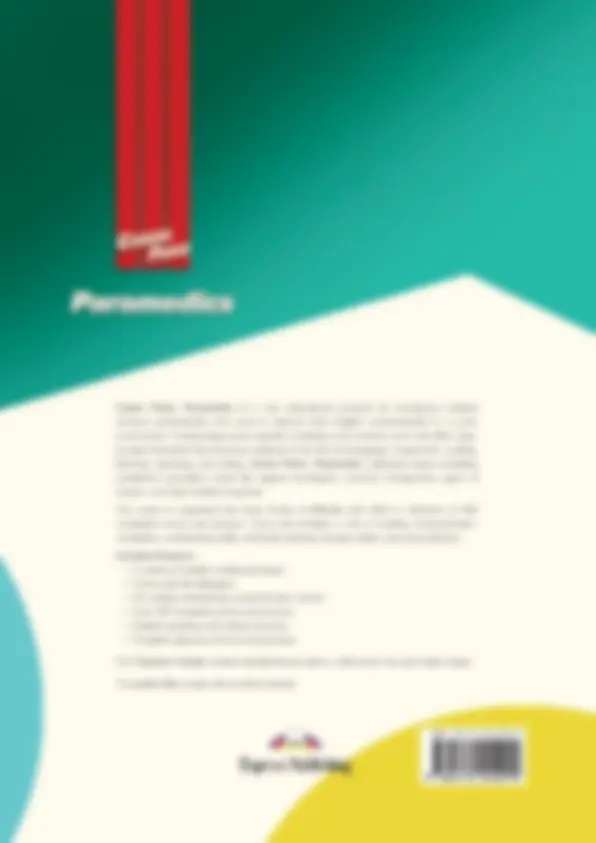


Study with the several resources on Docsity

Earn points by helping other students or get them with a premium plan


Prepare for your exams
Study with the several resources on Docsity

Earn points to download
Earn points by helping other students or get them with a premium plan
Community
Ask the community for help and clear up your study doubts
Discover the best universities in your country according to Docsity users
Free resources
Download our free guides on studying techniques, anxiety management strategies, and thesis advice from Docsity tutors
A comprehensive review for the emt paramedic exam, covering topics such as the role of a paramedic, parts of the body, the musculoskeletal and integumentary systems, the respiratory and circulatory systems, blood, the gastrointestinal system, vital signs, measurements, and tools and equipment. It includes definitions and resources for further study.
Typology: Exams
1 / 14

This page cannot be seen from the preview
Don't miss anything!









EMT Paramedics and Emergency Medical Services EMS Comprehensive Exam Review and Rationale
Express Publishing Book 2
Express Publishing Book 3
ER Get ready!
1 What is the role of a paramedic? 2 How do first responders and hospital staff work together? hospital EMS Reading first responder patient health care
1 What is the main idea of the passage? A changes in an EMS department B new laws that affect ambulance operators C the construction of a new hospital D a training program for ER workers 2 According to the passage, what is NOT a current problem with the county’s health care? A The team of first responders is too small. B There is no department of paramedicine. C The hospitals and EMS teams are poorly coordinated. D Local emergency rooms are under strain. 3 How will the program improve health care in the county? A It will lower the cost of health care for patients. B It will increase the number of hospitals. C It will offer better training for first responders. D It will provide new equipment for local ERs. 4 Vocabulary
1 ER 4 paramedicine 2 transport 5 first responder 3 health care A someone who is called to assist immediately at emergency situations B the overall system of treating illnesses and injuries C a place within a hospital that handles urgent health care situations D to move something from one location to another E a branch of medicine that is practiced by people who are not physicians The expansion program will begin later this month. Spencer County Health is expanding the department of paramedicine. This will include a larger team of first responders. We believe this is an essential improvement for our county. Our goal is to raise our level of pre-hospital care. Currently, our EMS and hospitals have poorly coordinated procedures. And that’s not good for patients. Of course, our ambulance operators transport patients to the hospital. However, many do not have the training to give expert treatment. Better education will improve the quality of health care throughout the county. Additionally, it will reduce the strain on local ERs.
ABC [ABBREV-U10] ABC is an abbreviation that stands for “Airway, Breathing, and Circulation,” and refers to the factors that someone should examine when dealing with an unresponsive patient. abdomen [N-COUNT-U2] The abdomen is the part of the body below the chest, where most of a person’s gastrointestinal organs are located. accident [N-COUNT-U15] An accident is an event in which something unexpected and unwanted occurs, such as a vehicle collision, and may have minor or severe consequences. ankle [N-COUNT-U3] An ankle is a joint between the shin and the foot, which allows the foot to twist and bend in relation to the leg. anus [N-COUNT-U9] The anus is an opening in the lower torso where the body expels solid waste. appendix [N-COUNT-U9] The appendix is an organ in the gastrointestinal system that has an uncertain purpose, but may be related to the regulation of bacteria in the intestines. The appendix is not necessary for healthy bodily functioning, and is often surgically removed when it becomes inflamed. arm [N-COUNT-U2] An arm is a long, narrow part of the body that extends from the upper side of the torso, and connects to a hand at the other end. artery [N-COUNT-U7] An artery is a blood vessel that carries blood from the heart to other parts of the body. assault [N-COUNT-U15] An assault is the act of intentionally causing physical harm to another person. back [N-COUNT-U2] The back is the part of the body below the neck on the opposite side of the torso from the chest and abdomen. bandage [N-COUNT-U14] A bandage is a piece of material that is secured over a wound to protect it, keep it clean, and possibly stop it from bleeding. bladder [N-COUNT-U9] The bladder is an organ in the gastrointestinal system that receives urine from the kidneys and stores it until the body expels it. blood [N-UNCOUNT-U7] Blood is a fluid that travels throughout the body to distribute nutrients and oxygen. blood pressure [N-UNCOUNT-U10] Blood pressure (BP) is a measure of the strength of blood flow as it circulates, and is measured by the amount of pressure that the blood places on the arterial walls. blood pressure cuff [N-COUNT-U13] A blood pressure cuff is a device that is used to measure the strength of blood flow as it circulates. blood type [N-COUNT-U8] A blood type is a way to classify different people’s blood based on the presence of certain substances in the blood. blood vessel [N-COUNT-U7] A blood vessel is a part of the cardiovascular system that serves as a pathway for blood throughout the body, and may be an artery, a vein, or a capillary. board [N-COUNT-U14] A board is a strong, stiff piece of material that is used to stabilize a person’s spine during transport. bone [N-COUNT-U4] A bone is a hard, rigid substance that helps the body maintain its shape and structure. BPM [ABBREV-U10] BPM (beats per minute) are the number of times in one minute that the heart expands and contracts, and is measured by feeling someone’s pulse. breathe [V-I-U10] To breathe is to inhale, drawing oxygen into the lungs, and then exhale, releasing carbon dioxide. bronchi [N-PLURAL-U6] The bronchi are small tubes that carry air between the lower part of the trachea and the lungs. buttocks [N-PLURAL-U3] The buttocks are the parts of the body between the back and the legs, which make contact with a chair or other surface when a person sits. calf [N-COUNT-U3] A calf is the soft, fleshy part of the bottom of a leg, between the knee and ankle. 34 Glossary
Career Paths: Paramedics is a new educational resource for emergency medical services professionals who want to improve their English communication in a work environment. Incorporating career-specific vocabulary and contexts, each unit offers step- by-step instruction that immerses students in the four key language components: reading, listening, speaking, and writing. Career Paths: Paramedics addresses topics including ambulance operations, basic life support techniques, common emergencies, types of trauma, and major incident response. The series is organized into three levels of difficulty and offers a minimum of 400 vocabulary terms and phrases. Every unit includes a test of reading comprehension, vocabulary, and listening skills, and leads students through written and oral production. Included Features: